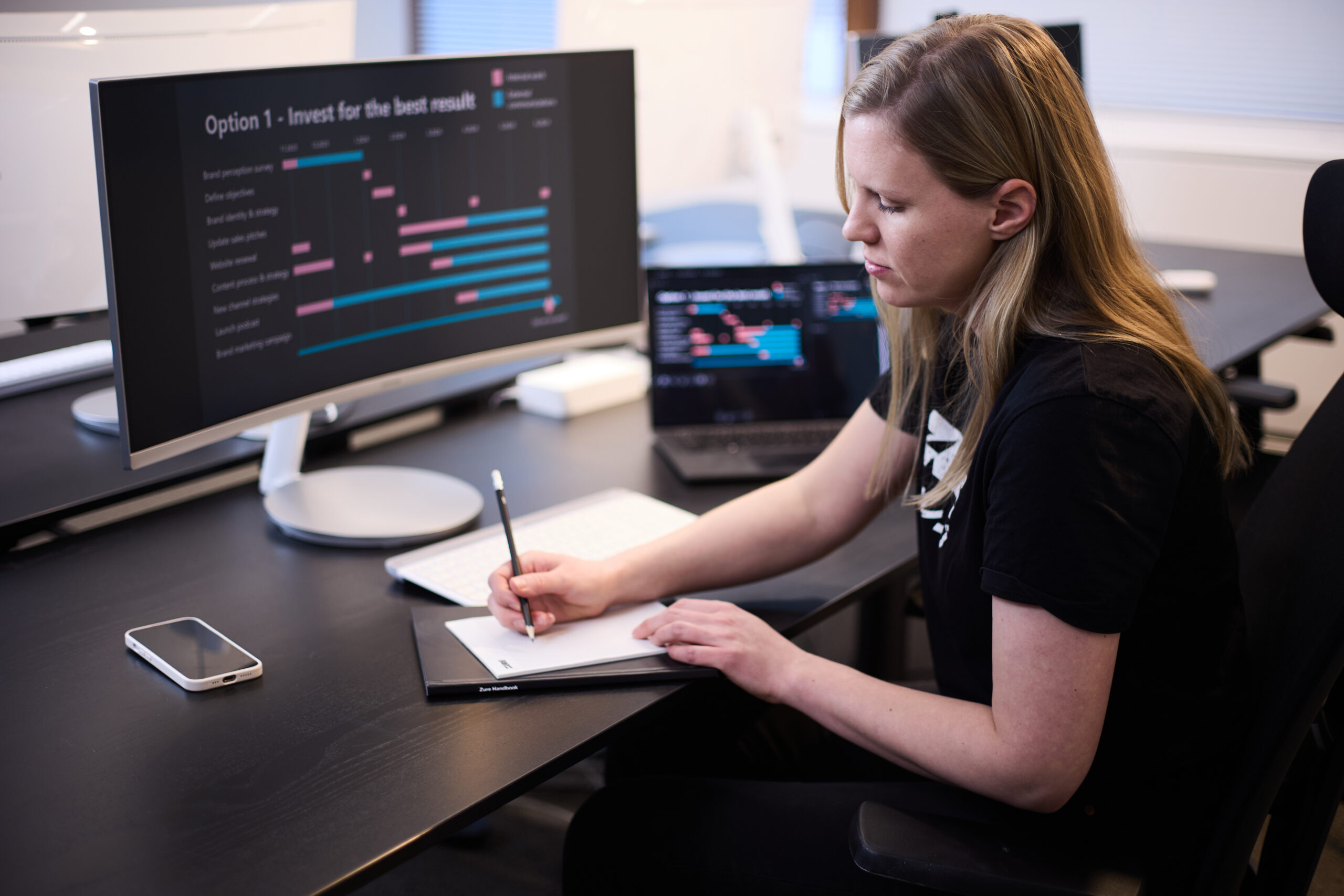We recently conducted a marketing research to understand better what potential clients value in software projects and how do we compare in the market with other digital product development providers. The research was targeted towards leadership in large Finnish corporations. 62% of the people who answered felt that the most important trait in a partner for digital product development is to understand the needs of the end user. The ROI (Return Of Investment) of User Experience design on business outcomes is clear and more and more leaders area really starting to understand this.
To back this up, studies have shown that an investment in great user experience can produce outstanding financial results. Already back in 2016 Forrester research released a trend report stating that a 1 dollar investment in UX can generate up to 100 dollars in return, what leads to a ROI of 9,900%. According to a McKinsey report from 2018, companies prioritizing design have a 32% higher revenue growth and a 56% higher total return to shareholders than their competitors.
“Good design is good business”
Thomas J. Watson Jr,
IBM President,
1973
Great usability eats costs for breakfast
Bad usability leads to more error prone situations and increases the cost of actions and decreases productivity. To understand the payback of ensuring that your solutions are usable requires nothing more than some simple math.
Let’s say a single employee does an average of 5 mistakes a week due to the complexity of the software they use and sorting each mistake takes about 15 minutes. The hourly salary of an employee is 20€’s and you have 50 employees. So 5 X 15 minutes = 75 minutes used per employee on solving mistakes. Let’s Multiply this by the amount of employees. 75 x 50 = 3750 minutes, what is 62,5h used for error situations in a week. With the hourly rate of 20€ the total cost is 3125€/week, meaning a loss of 162 500 € a year. Naturally no one can promise a 100% error free solution, But let’s say we can reduce the number of mistakes down to 2/user, per week. This could total to 26 000 € a year, generating 136 500€ in total savings.
In other words bad software always costs more on the long run than doing it right from the beginning. It all comes down to just understanding your users.
Don’t guess
No matter if the project is to develop a new solution or modernize an existing one. User research and observations are an important part of the design work needed to create a good experience. Seeing how the actual users work, understanding their pain points and analyzing the findings helps us to find the best solutions for each specific use case.
User research does not have to be a time consuming and an expensive effort. According to Nielsen Norman Group, observing and interviewing just five users usually uncovers about 85 percent of all usability problems in common solutions.

Booking.com was able to increase the amount of bookings by 9.5%, by eliminating user pain points and streamlining the booking process. This lead to a direct increase in revenue and higher user conversion rates.
Instead of guessing what the users need, go and ask to ensure that whatever is build will produce good results and ensure a proper payback.
Validate your assumptions
After research there is the opportunity to validate by doing quick user testing. We can quite fast make prototypes and mock ups of the possible solution. We can test with the same users and validate if it would ease the pain points in the identified use cases.
This gives us validation that we are doing the right things and also ensures that we won’t spend money in unneeded development going forward. Spending money in UX design, saves money in development. In the end it is much more cheaper to throw away design files than to throw away production code.
With the testing findings there is usually enough information to move into development and build the first version without too many unknowns.
For practical user testing tips I recommend reading my colleague Roosa’s blog post on the topic.
Data driven design iterations
Design is a continuous process and does not end after the first release. Nowadays there are numerous ways to collect user data from digital services.
Identifying problems like long load times, miss clicks and process abandonment is needed in order to maximize the daily value your solution generates. So it is important to monitor the usage and make new design decisions in order to correct possible findings what can affect your investment payback .
If we take the common example of cart abandonment in online shopping. According to Baymard institute research 22% of US online shoppers have abandoned an order due to a “too long / complicated checkout process”. This kind of problems can easily be monitored and also answered by identifying the pain points what lead to abandonment, like too long or complicated checkout forms and streamlining the process.

Amazon’s implementation of one-click checkout reduced bounces and helped to increase revenue by 5–10%
User Experience generates value
Good user experience can help you decrease costs and increase revenue. It is an investment that pay for itself almost every time when done right.
If you are interested in learning more about the User Experience design service Zure has to offer then please get in touch and we are more than happy to see how we can help you to elevate your business.
Share this post:
Erkka Puusti
Design LeadErkka is an experienced designer, a facilitator, and a creative technologist. As a Design Lead Erkka is also responsible for Zure's design offering.
erkka.puusti@zure.com






